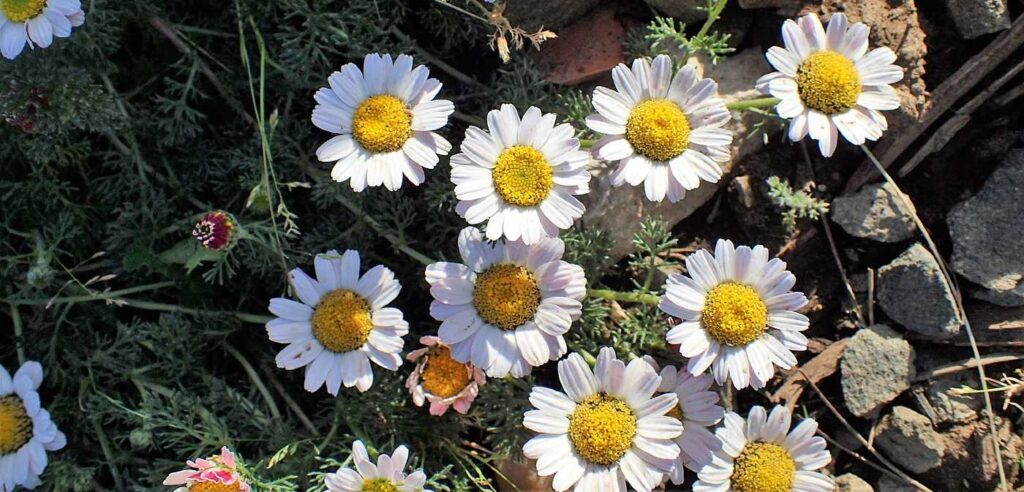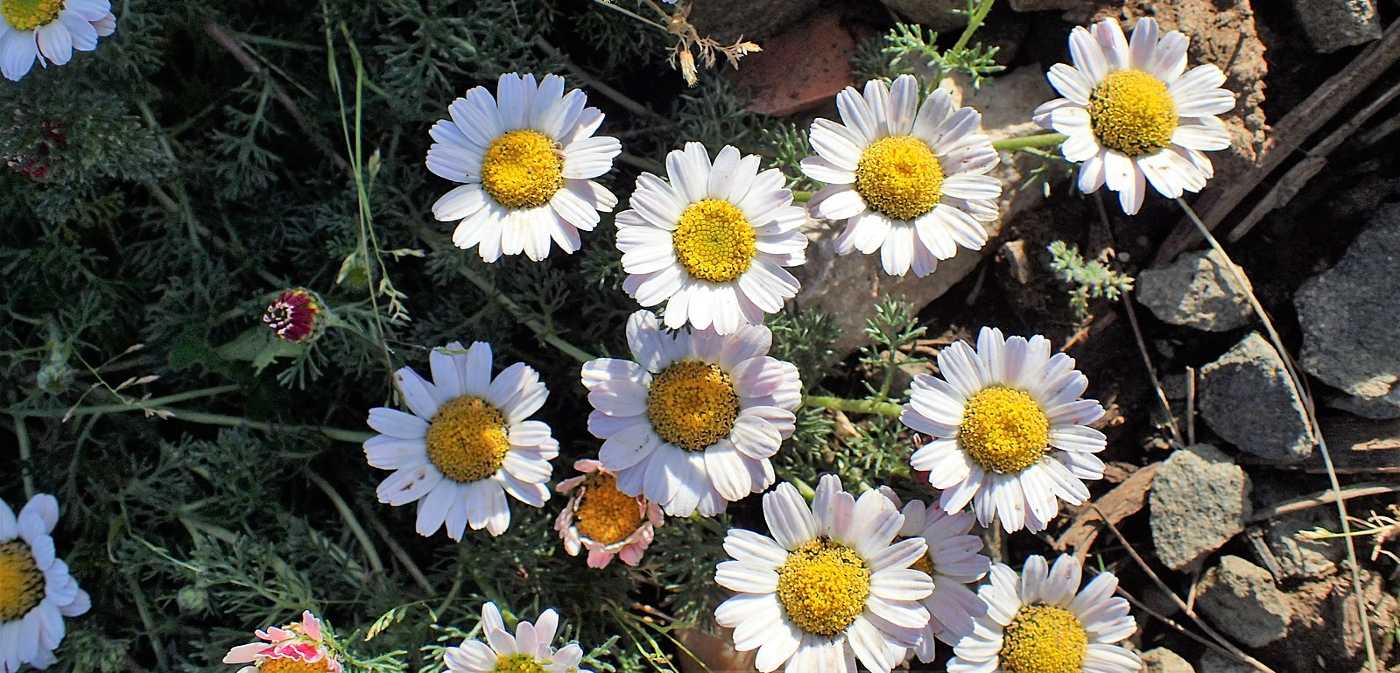
In Kenya, a drive through the Central Highlands will sometimes reveal a landscape covered in a beautiful white-petaled flower with a lethal secret.
The yellow center of the Chrysanthemum cinerariifolium contains one of the world’s great natural insecticides, that as well as being totally harmless to plants, humans, and animals, supports the livelihoods of hundreds of thousands of rural Kenyans who supply much of the world’s pyrethrum, the principle chemical in the flower.
Pyrethrum is becoming a major tool in the fight against mosquito-borne illnesses, as the toxin attacks the central nervous system of the insect, causing it to spasm around and drop still over a 30-second period.
It’s also an excellent natural pesticide, not only for gardens and crops but livestock, who can breath a sigh of relief from biting ticks and flies if a little pyrethrum is rubbed onto their neck, legs, and shoulders.
Simply growing Chrysanthemum cinerariifolium near any plants you wish to keep insect free is enough to protect them from most pests, such is the power of the pyrethrum therein.
“Pyrethrin is the most important insecticide in the world,” says Joel Maina Kibett, chief agriculture officer of Nakuru County in Kenya. “It is natural, organic, and it has no environmental effects. And it is user friendly.”
CHECK OUT: Orchid Thought to Be Extinct in UK Was Discovered Blooming on the Rooftop of London Bank
As chemical insecticides are responsible for mass insect death around the world, declines in honeybees, and many other deleterious effects on animals, the need for mass-produced natural chemicals is high. Kenya is uniquely suited for the cultivation of the flower and the pyrethrum it produces, as its Central Highlands region provides perfect growing conditions for the flower which bursts out of the ground following Kenya’s two rainy seasons.
Flower monopoly

During the 1970s and ’80s, Kenya grew nearly all the pyrethrum in the world decades after the arrival of the chrysanthemum species from Japan along with British colonizers. It became such an economic driver that it was placed in the Kenyan coat of arms following independence.
After the rise of industrial agriculture and cheaper pyrethrum produced elsewhere, the entire pyrethrum farming industry in Kenya collapsed. The pyrethrum state monopoly only finished paying off debts to growers in 2018, a year after Kenya liberalized the market, encouraging competition, production, and innovation.
MORE: Shade From Solar Panels Increases Abundance of Flowers, Benefiting Pollinators
In Kibett’s Nakuru County, 2017 saw 15,703 farming households receive C. cinerariifolium seedlings from the county government and half a dozen private companies. National Geographic reports that these are already generating income for more than 100,000 rural Kenyans.
“In total, we have given out 23.3 million seedlings since we started the revival of the sector,” Kibett told Nat Geo in a special feature on pyrethrum. “Most of us became what we are because of that flower. We remember seeing beautiful landscapes covered with white sheets of flowers. We have done it before, and the results were very good. And we have the knowledge. We have the existing infrastructure.”
Where before farmers sometimes had to wait months to receive payments for their deliveries, the private sector are settling up within a few days on a popular mobile payment app which in turn allows farmers to quickly pay for school and other things.
Much of the pyrethrum goes to making mosquito-killing incense: coils of pyrethrum produced from dried C. cinerariifolium that are popular insect repellents around the world.
RELATED: A Rose Inspired This Design For the Smartest Way to Collect And Purify Water
A University of Nairobi field study reported that pyrethrin-based insect spray managed to kill around 96% of a recent desert locust plague, a devastating phenomenon that creates unstoppable swarms of flying insects that can devour 300 million pounds of crops in a single day.
Since much of the world’s pyrethrum is grown in the Horn of Africa, where locusts are such a problem, it seems like the perfect solution.
LET Good News Grow—Share This Story on Social Media…





















This article seems to perpetuate the myth propagated by Big Organic that natural insecticides are less harmful than synthetic pesticides. “Pyrethrins are practically non-toxic to birds but highly toxic to honey bees. However, some of the risk to pollinators is limited by their slight repellent activity and rapid breakdown. Pyrethrins are highly to very highly toxic to fish. They are also very highly toxic to lobster, shrimp, oysters, and aquatic insects.” http://npic.orst.edu/factsheets/pyrethrins.pdf
I am not from Kenya, but have seen those locust plagues, and am happy the solution lies right in their own midst.